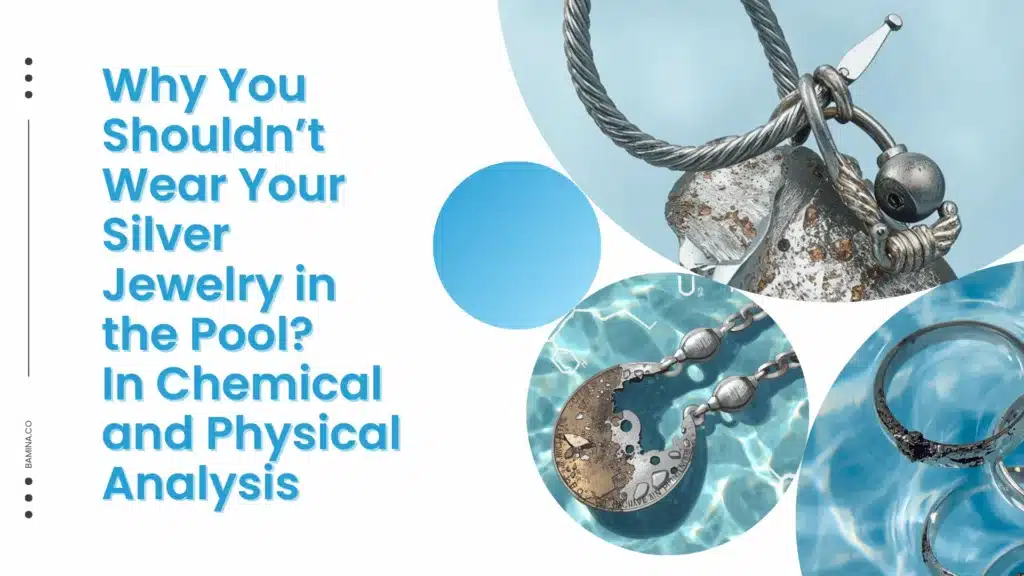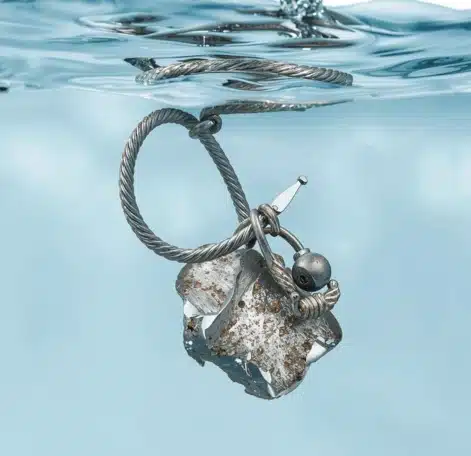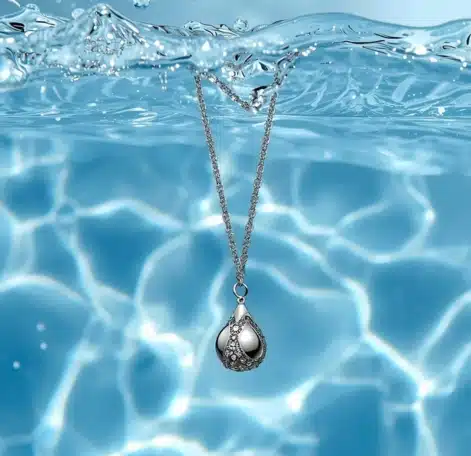Many people love wearing their jewelry everywhere—especially pieces that feel personal, meaningful, or stylish. However, Why you shouldn’t wear your silver jewellery in the pool ? In chemical and physical analysis becomes important when we understand how pool water affects silver. Pools contain chemicals, temperature variations, and physical conditions that gradually damage silver jewelry. What looks like harmless swimming can lead to tarnishing, discoloration, pitting, and structural weakening.
Silver, especially 925 sterling silver, contains 92.5% pure silver and 7.5% copper or similar strengthening metals. This composition makes silver durable enough for everyday jewelry, but also reactive. Why you shouldn’t wear your silver jewelry in the pool ? In chemical and physical analysis starts with recognizing that silver reacts with chemicals in water and air. These reactions change the surface of the metal, leading to tarnish and dullness.
Most pools use chlorine to kill bacteria and keep the water clean. However, chlorine reacts with silver and copper. When we examine Why you shouldn’t wear your silver jewelry in the pool ? In chemical and physical analysis, chlorine causes chemical corrosion. This means the surface of the metal begins to break down. Tarnish appears faster, often turning the jewelry black or gray. In stronger or heated chlorine, the damage can be irreversible. Silver loses shine, smooth texture, and reflective quality.
Even in pools that do not use chlorine, the risks remain. Saltwater pools contain dissolved salts that interact with silver. Salt accelerates oxidation, causing silver to tarnish even faster than in chlorine. Mineral pools may contain copper, sulfur, or magnesium. Why you shouldn’t wear your silver jewelry in the pool ? In chemical and physical analysis shows that these minerals bond to the metal surface and form dark, rough layers. Over time, the surface becomes uneven and harder to polish back to original brightness.
Pools often have warm water, and heat speeds up chemical reactions. In addition, swimming involves movement. Jewelry rubs against surfaces, other jewelry, or skin. This friction scratches softened metal. Why you shouldn’t wear your silver jewelry in the pool ? In chemical and physical analysis includes the fact that heated chloride reactions weaken the metal structure. When silver becomes weakened, clasps loosen, chains stretch, and prongs holding stones become less secure.
Even after leaving the pool, damage continues. Chemicals and salts remain trapped in tiny openings and textures in the jewelry. If not cleaned properly, reactions continue in the air. This is a key part of Why you shouldn’t wear your silver jewelry in the pool ? In chemical and physical analysis — the exposure doesn’t end when you dry off. Over time, silver requires deeper polishing, re-plating, or full repair. In some cases, structural damage makes restoration impossible.






